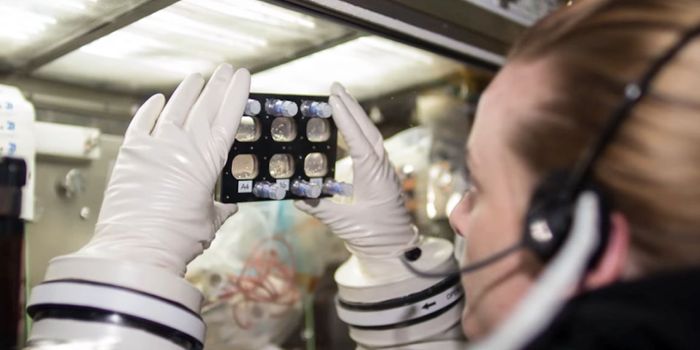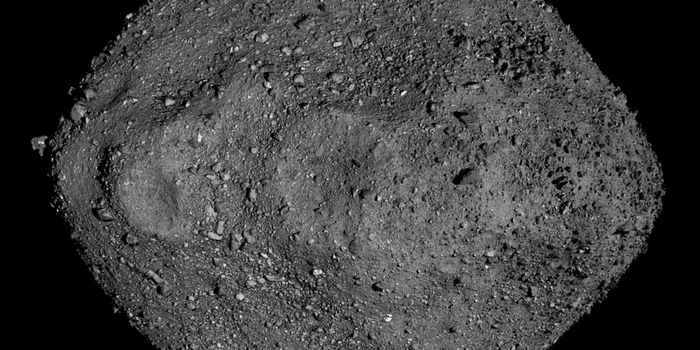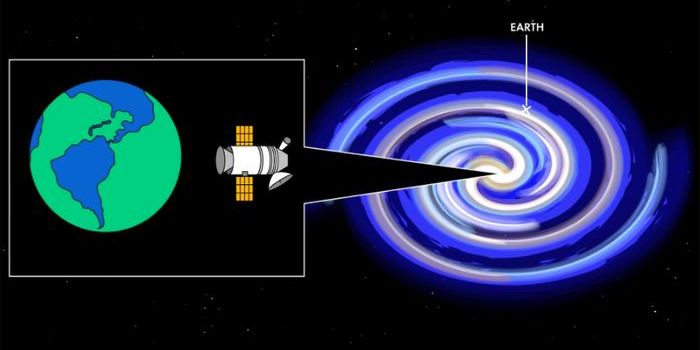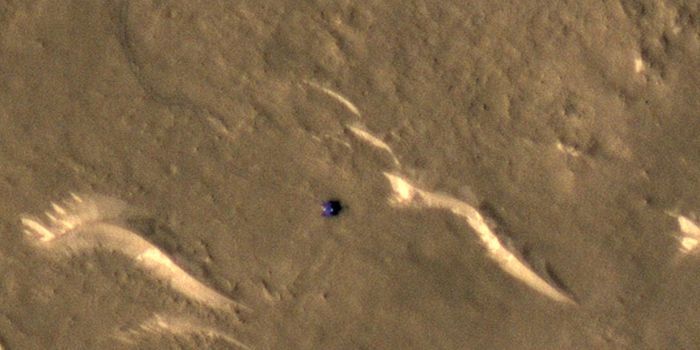NASA Webb Observes 6,000-Mile Water Vapor Plume from Saturn's Icy Moon, Enceladus
NASA recently announced that the agency’s James Webb Space Telescope (JWST) used its Near-Infrared Spectrograph (NIRSpec) to observe a more than 6,000-mile water plume being discharged from the interior ocean of Saturn’s icy moon, Enceladus, or more than 20 times the diameter of the small moon, which is only 313 miles across. These findings have recently been accepted for publication in Nature Astronomy and could alter our understanding of the geophysics of Enceladus as prior observations of its plumes have only been measured at a few hundred miles in length.
Image from NASA’s James Webb Space Telescope displaying a water vapor plume discharging from the south pole of Saturn’s moon, Enceladus. The plume extends over 6,000 miles, or 20 times the diameter of the moon itself. An inset image from the Cassini orbiter is here to demonstrate the scale of the plume. (Credit: NASA, ESA, CSA, STScI, and G. Villanueva (NASA’s Goddard Space Flight Center). Image Processing: A. Pagan (STScI))
“When I was looking at the data, at first, I was thinking I had to be wrong. It was just so shocking to detect a water plume more than 20 times the size of the moon,” Dr. Geronimo Villanueva, who is a planetary scientist at NASA’s Goddard Space Flight Center and lead author of the study, said in the announcement. “The water plume extends far beyond its release region at the southern pole.”
The researcher estimated the water is being discharge with the equivalent rate of 79 gallons per second, capable of filling an Olympic-sized swimming pool in only two hours. While not directly stated in the study, previous studies have identified water plumes being discharged from the south pole “tiger stripes” of Enceladus.
The "tiger stripes" of Enceladus (lower left). (Credit: NASA, ESA, JPL, SSI, Cassini Imaging Team)
NASA’s Cassini spacecraft spent more than 10 years studying Saturn and its many moons, including Enceladus, and was responsible for imaging these water plumes for the first time, along with flying through and sampling them. However, despite JWST being almost 900 million miles from Saturn as it orbits one million miles from Earth at the Sun-Earth Lagrange Point 2, this unique vantage point combined with the extreme sensitivity of its instruments gives scientists new context of how to study Enceladus and its plumes.
Data from Webb’s NIRSpec (Near-Infrared Spectrograph) showing the 6,000-mile water plume discharging from Enceladus. (Credit: NASA, ESA, CSA, STScI, Leah Hustak (STScI))
“The orbit of Enceladus around Saturn is relatively quick, just 33 hours. As it whips around Saturn, the moon and its jets are basically spitting off water, leaving a halo, almost like a donut, in its wake,” explains Dr. Villanueva. “In the Webb observations, not only was the plume huge, but there was just water absolutely everywhere.”
This “donut”, also called a torus, that Dr. Villanueva refers to as being “everywhere” is Saturn’s E-ring, which is the widest and outermost ring of Saturn. Scientists have known for some time that Enceladus’ water plumes feed this torus, with an estimated 30 percent of the water remaining in this torus while the remaining 70 percent supplies the rest of the Saturnian system.
Video animation showing NASA's Cassini spacecraft flying through and sampling the plumes of Enceladus during its decade-long mission exploring Saturn and its moons.
Since the Cassini mission ended in 2017, there are currently no spacecraft exploring Saturn and its many moons. Going forward, the plan is to make JWST the primary observatory for Enceladus which will help scientists develop future space missions to explore this mysterious icy moon, including its interior volume of water and the thickness of its icy shell.
What new discoveries will JWST make about Enceladus and its water plumes in the coming years and decades? Only time will tell, and this is why we science!
Sources: NASA, NASA (1), arXiv, NASA (2), NASA (3), NASA (4), Webb Space Telescope, NASA (5)
As always, keep doing science & keep looking up!











